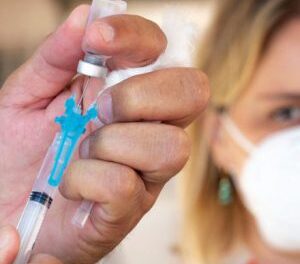The Centers for Disease Control and Prevention (CDC) in the United States has sounded the alarm following a concerning surge in tuberculosis (TB) cases, with the highest numbers recorded in a decade.
According to a new government report released Thursday, 40 states across the nation reported an uptick in TB cases, with rates rising among all age groups. The CDC’s data reveals that more than 9,600 cases were reported in 2023, marking a significant 16% increase from the previous year and the highest count since 2013.
The rise in TB cases comes after a sharp decline at the onset of the COVID-19 pandemic, with infections steadily climbing since then.
While most TB cases in the U.S. are diagnosed in individuals born in other countries, experts attribute the surge in 2023 to a combination of factors. This includes a surge in TB cases globally, with the World Health Organization ranking TB second only to COVID-19 in infectious fatal diseases worldwide in 2022. Additionally, increased migration and post-pandemic international travel have likely contributed to the rise in cases.
However, other factors such as illnesses that weaken the immune system and allow latent TB infections to emerge are also at play.
Dr. Philip LoBue, director of the CDC’s Division of Tuberculosis Elimination, noted that while TB numbers were expected to rise, the extent of the increase in 2023 exceeded expectations.
Despite the surge, the number and rate of new TB cases each year remain smaller than in the past, and the U.S. continues to have a lower rate of new TB cases compared to most countries.
Tuberculosis, caused by bacteria that typically target the lungs, is spread through the air when an infectious person coughs or sneezes. If left untreated, it can be fatal.
The CDC’s statistics for 2023 reflect the number of people who developed symptoms and were diagnosed with TB, rather than newly infected individuals. It’s estimated that 85% of those counted in 2023 had latent TB, where the bacteria remain dormant in the body until the immune system is weakened, allowing the infection to reactivate.
The role of COVID-19 in the resurgence of TB cases is still under investigation, with scientists working to understand the factors leading to the reactivation of latent TB infections.
In response to the rising TB cases, public health efforts are being ramped up, with initiatives such as hiring TB case managers and community health workers and utilizing video monitoring of patients taking medications to ensure treatment adherence.
However, challenges such as flat federal TB funding for state and local health departments and shortages of key antibiotics used against TB pose obstacles to effectively tackling the resurgence of the disease. Additionally, drug-resistant TB infections have emerged in a fraction of cases, underscoring the need for continued vigilance and innovative approaches in TB prevention and treatment.











